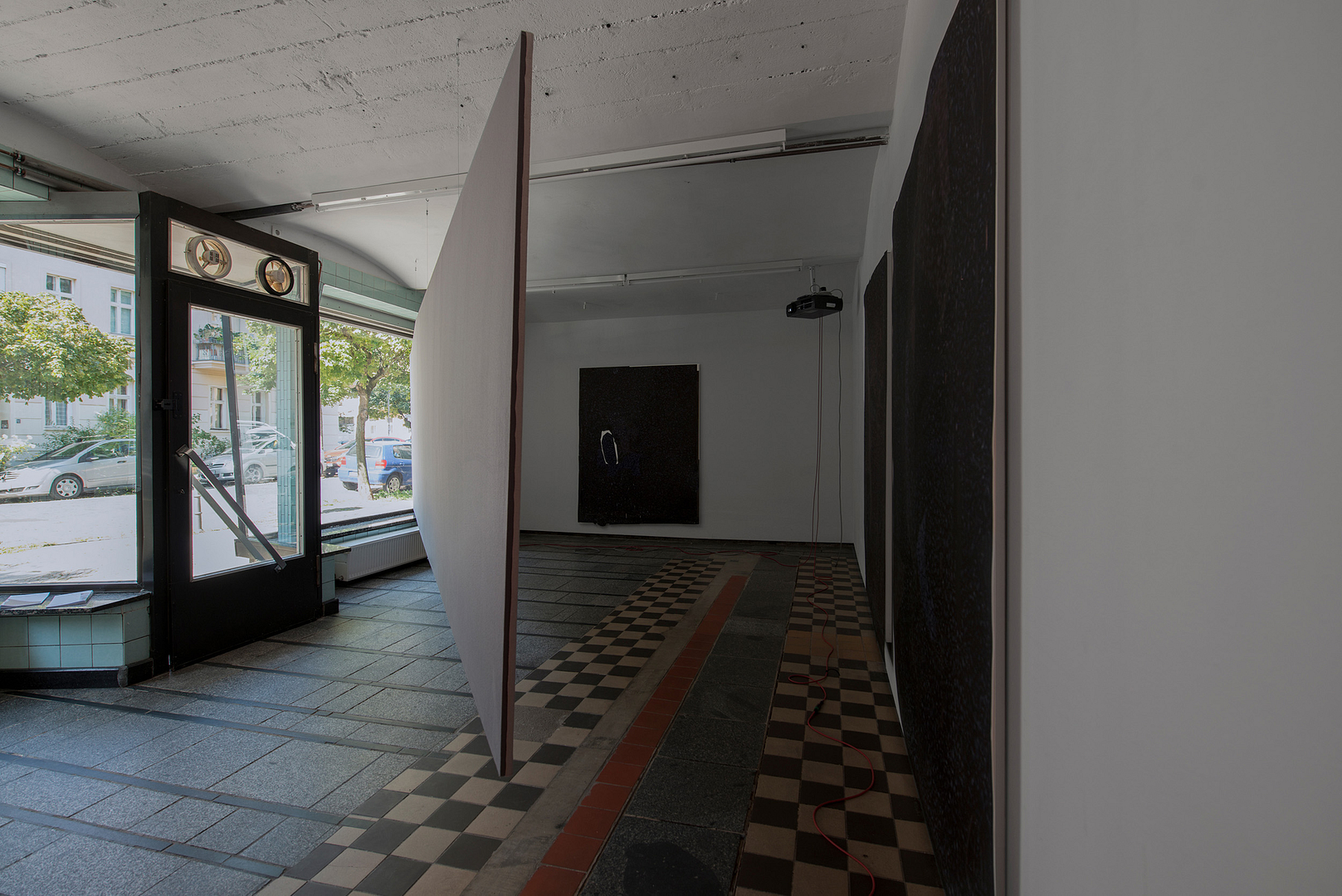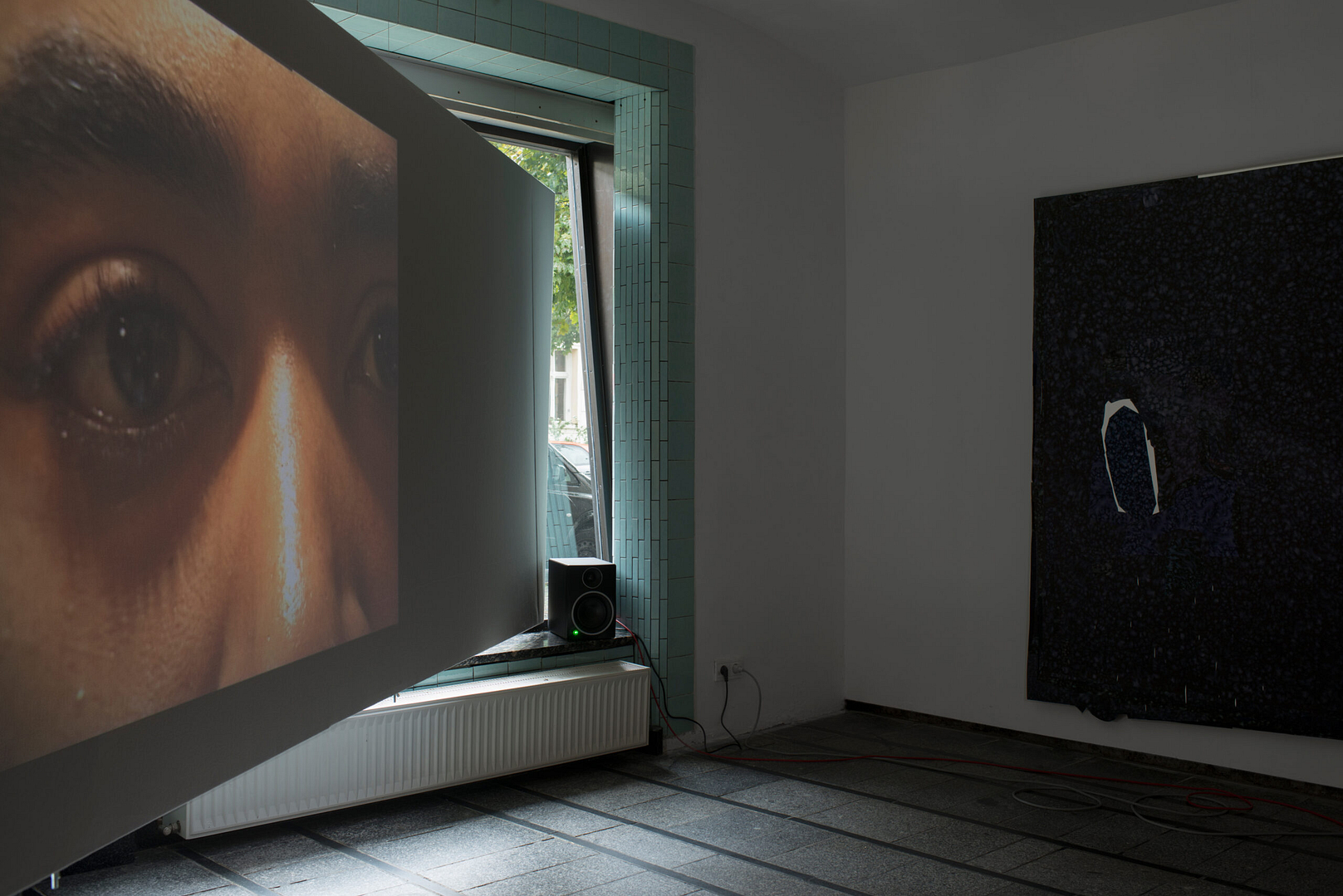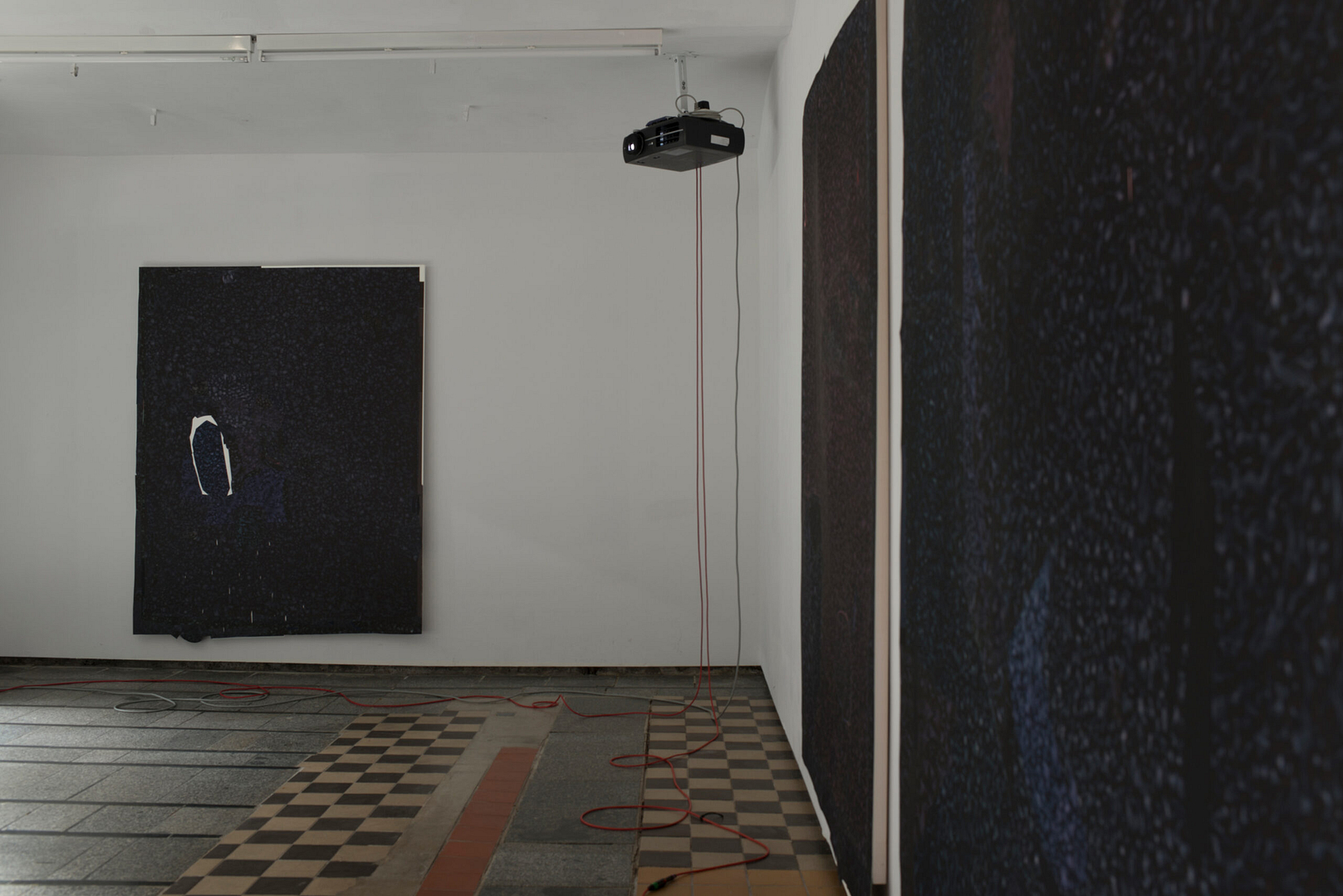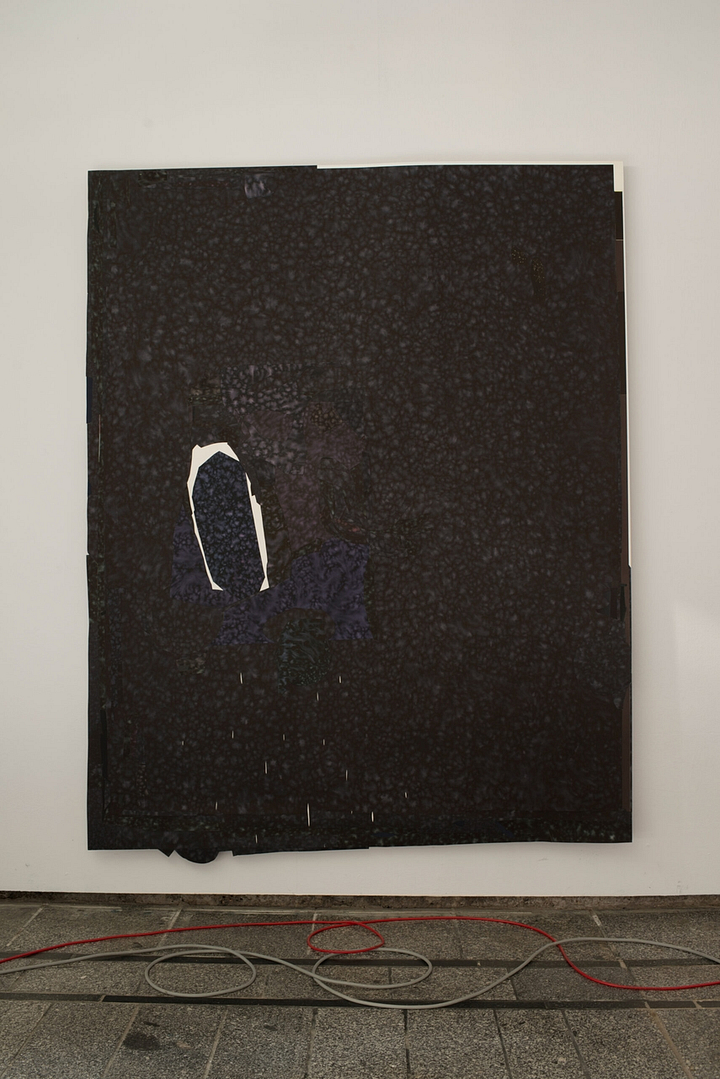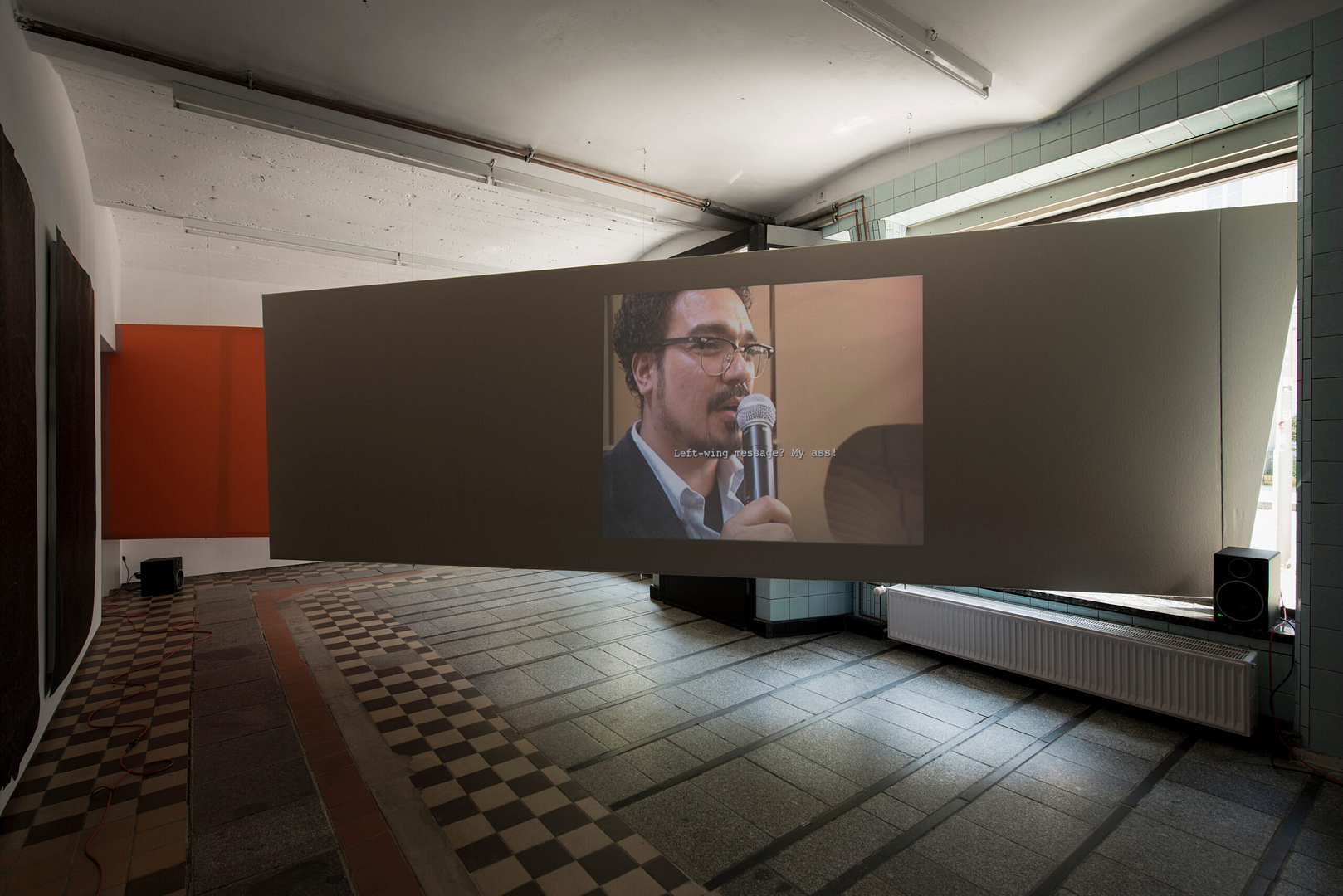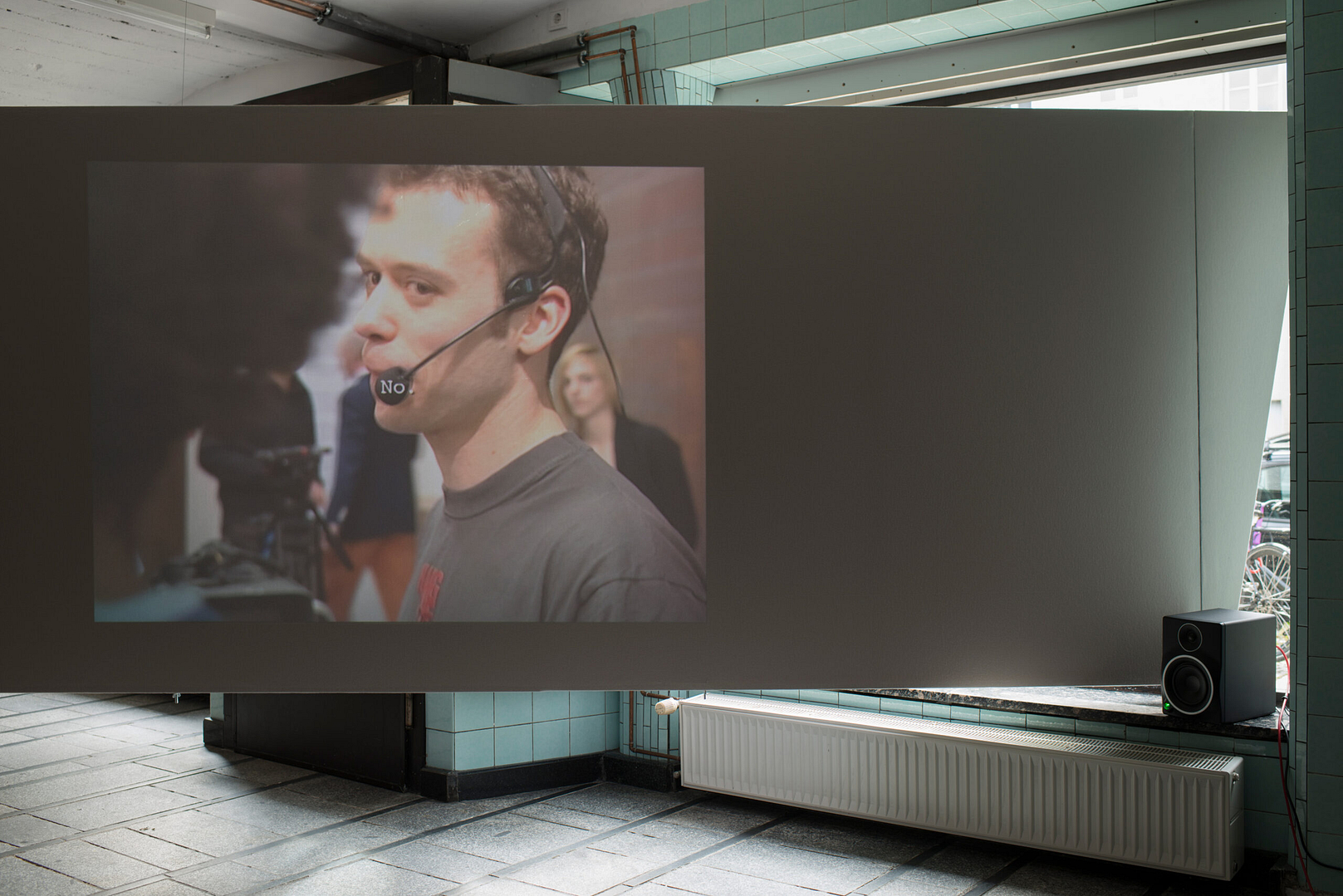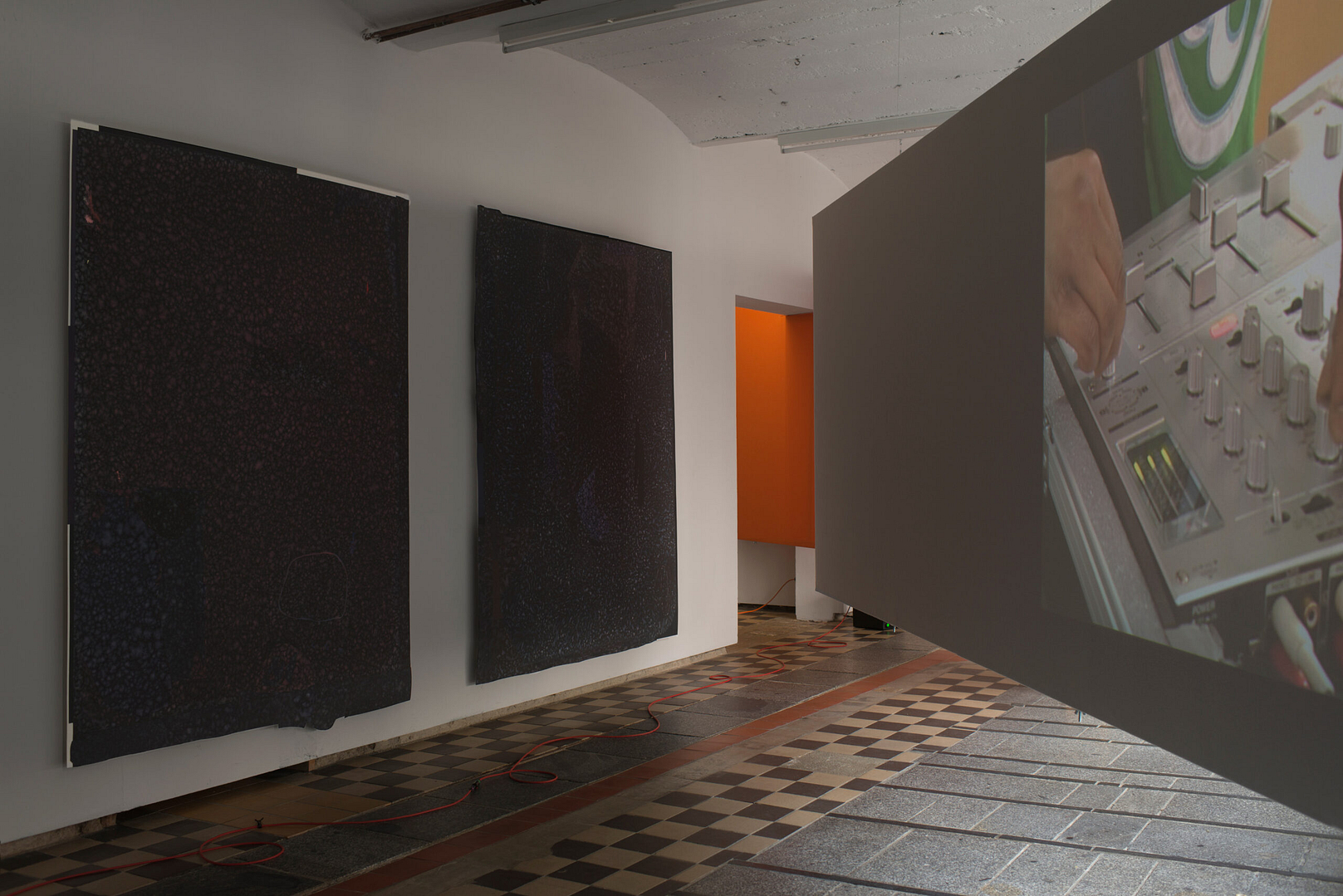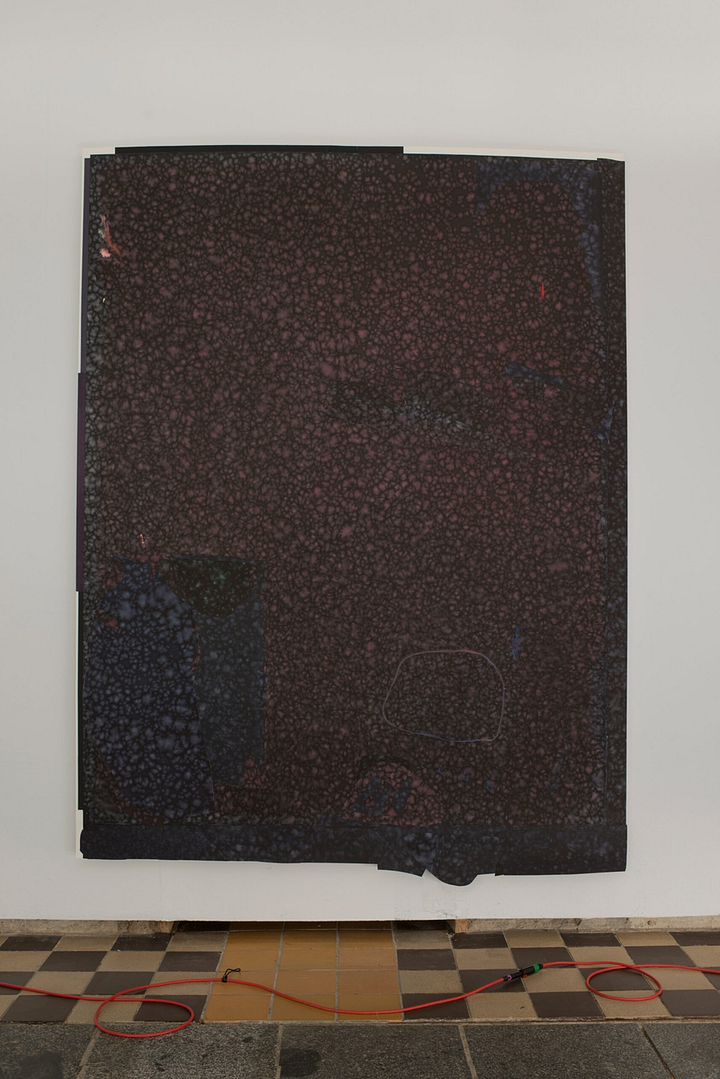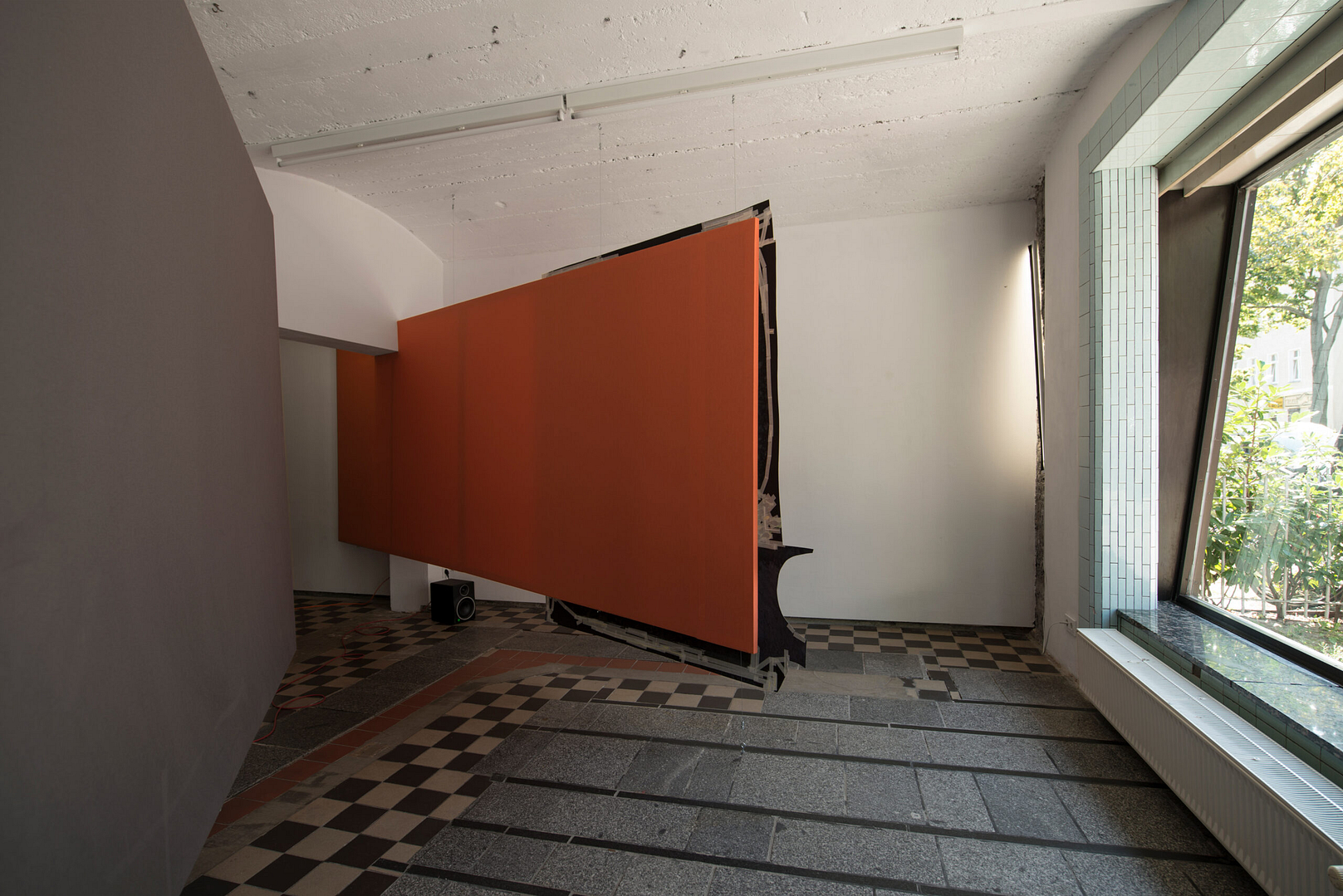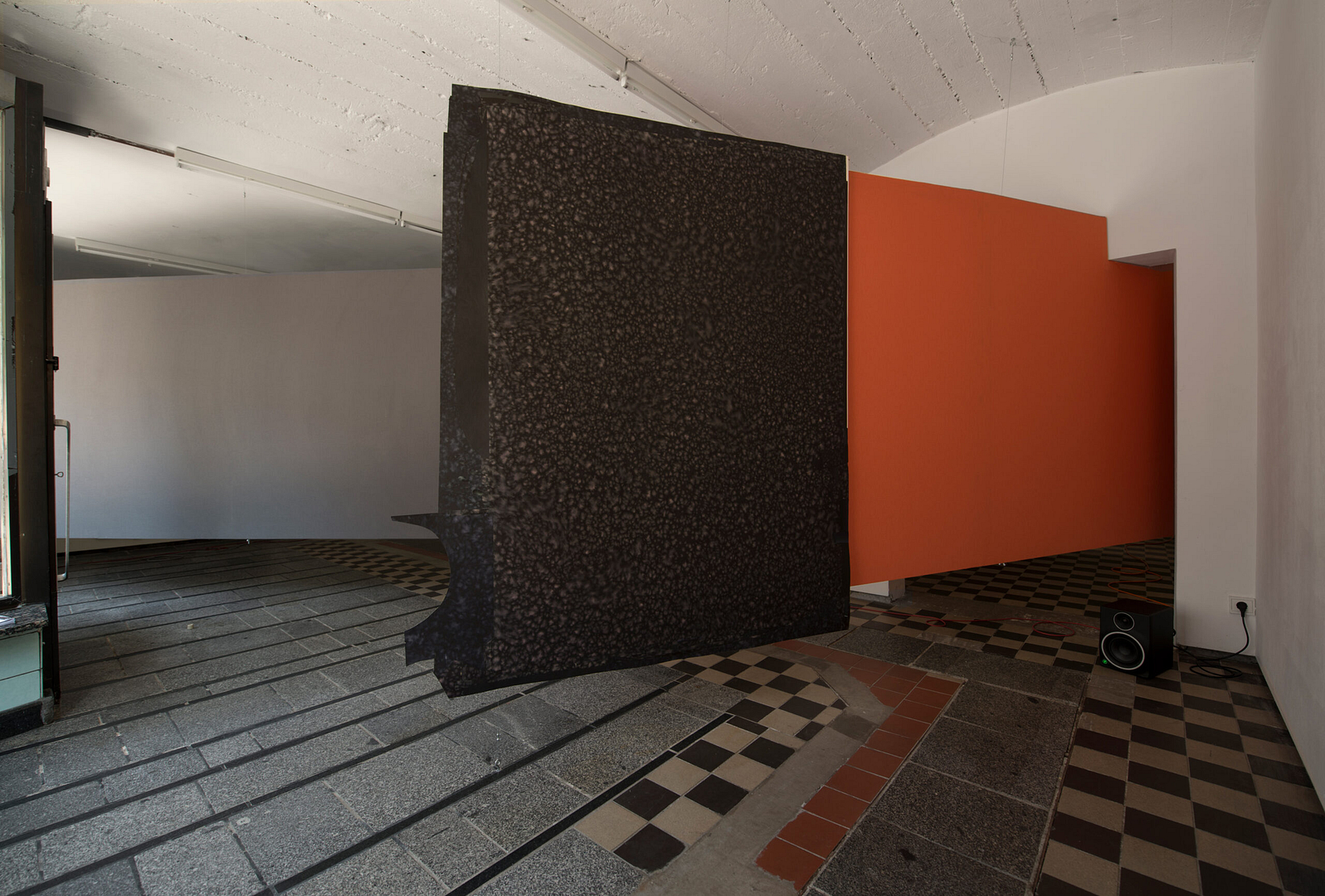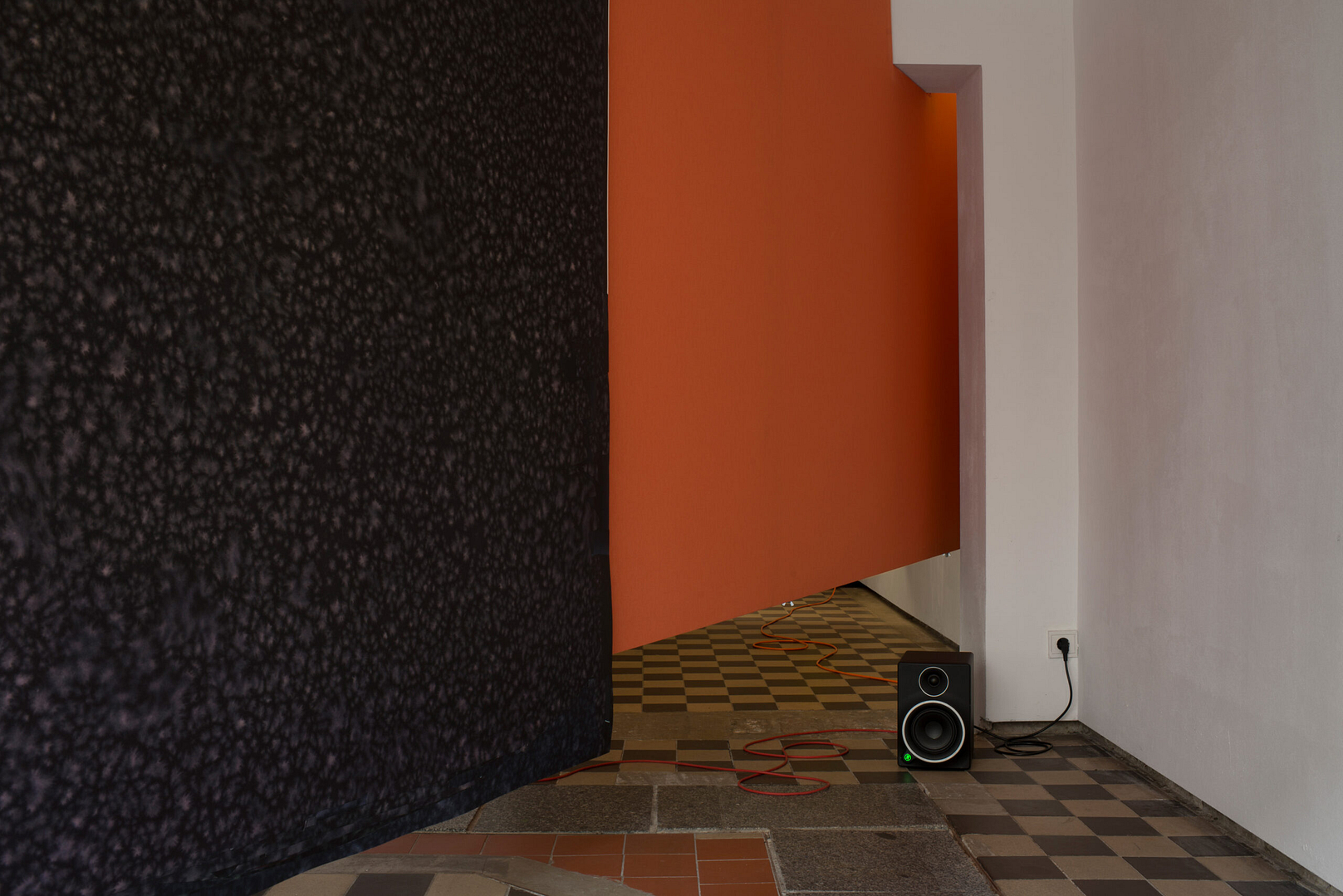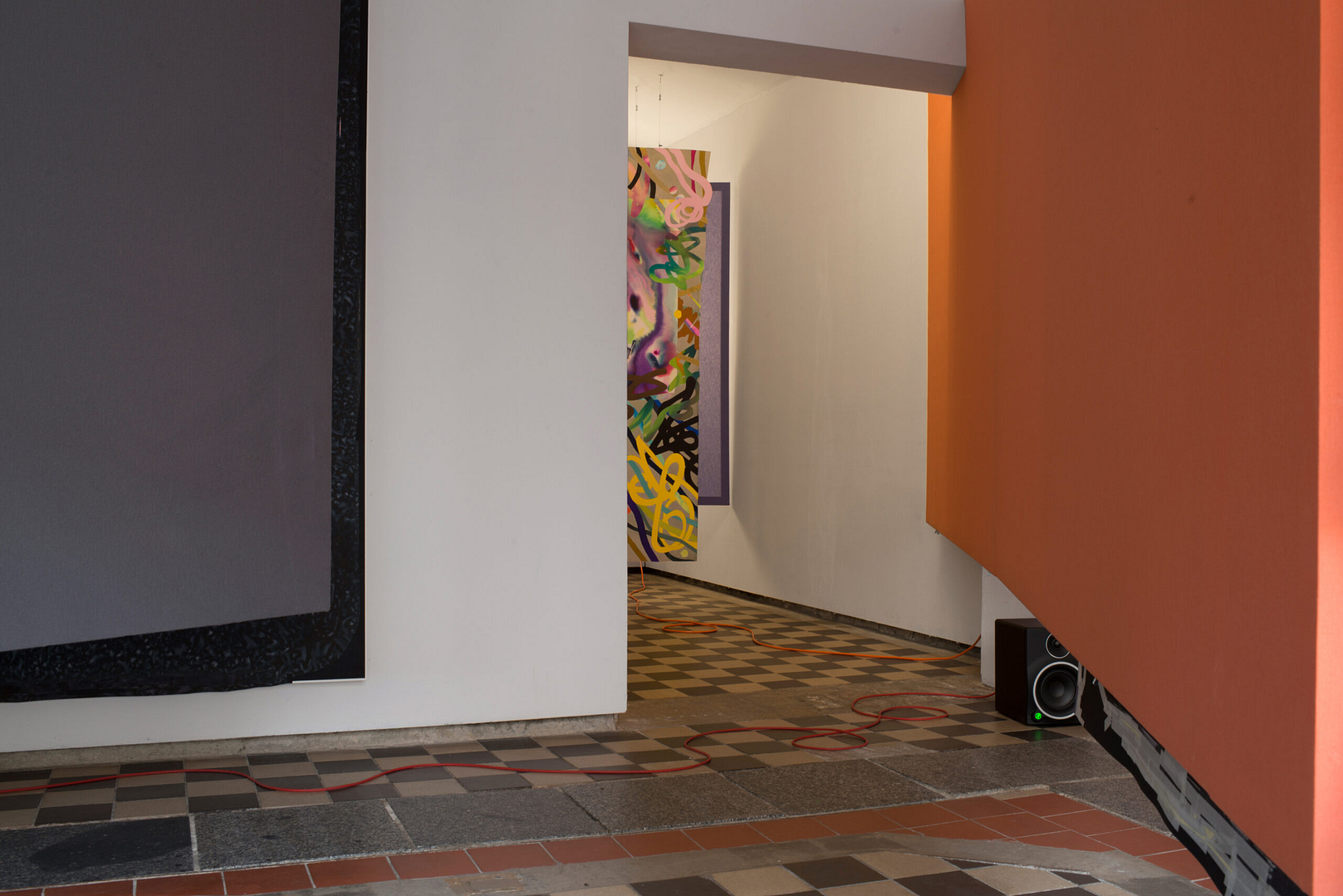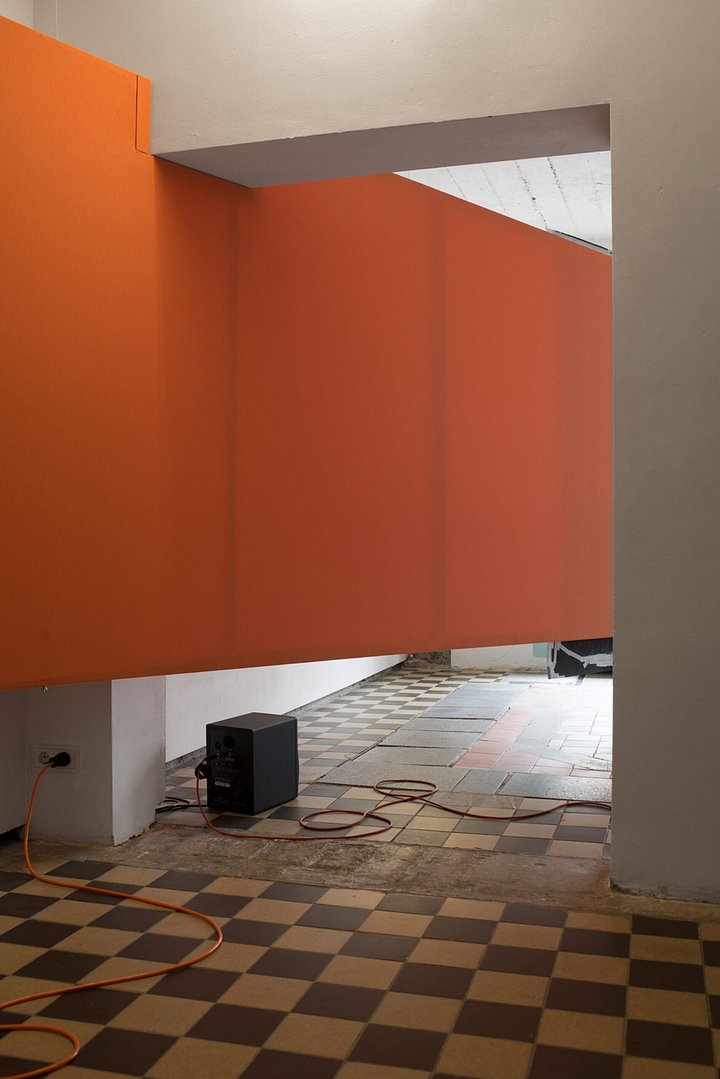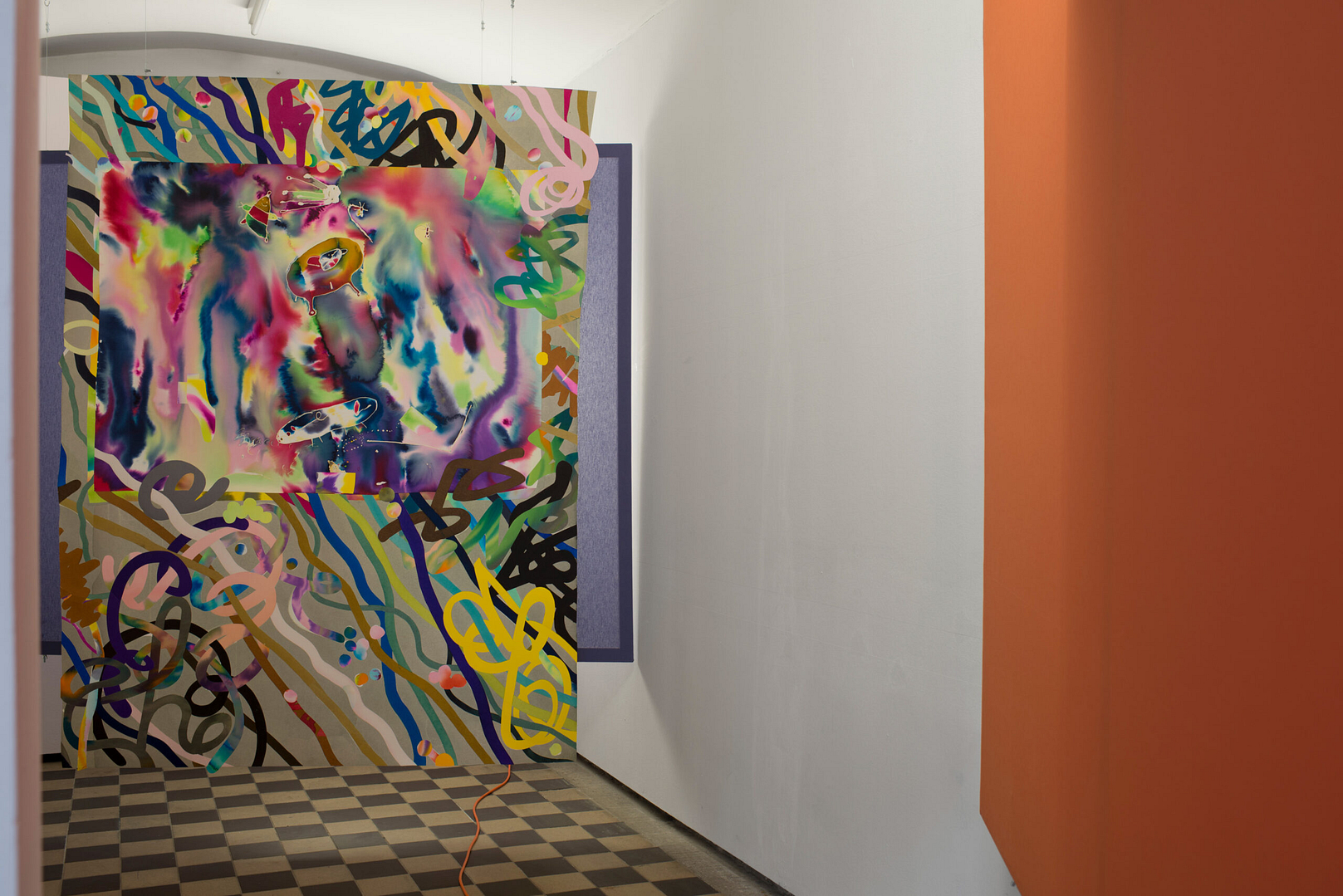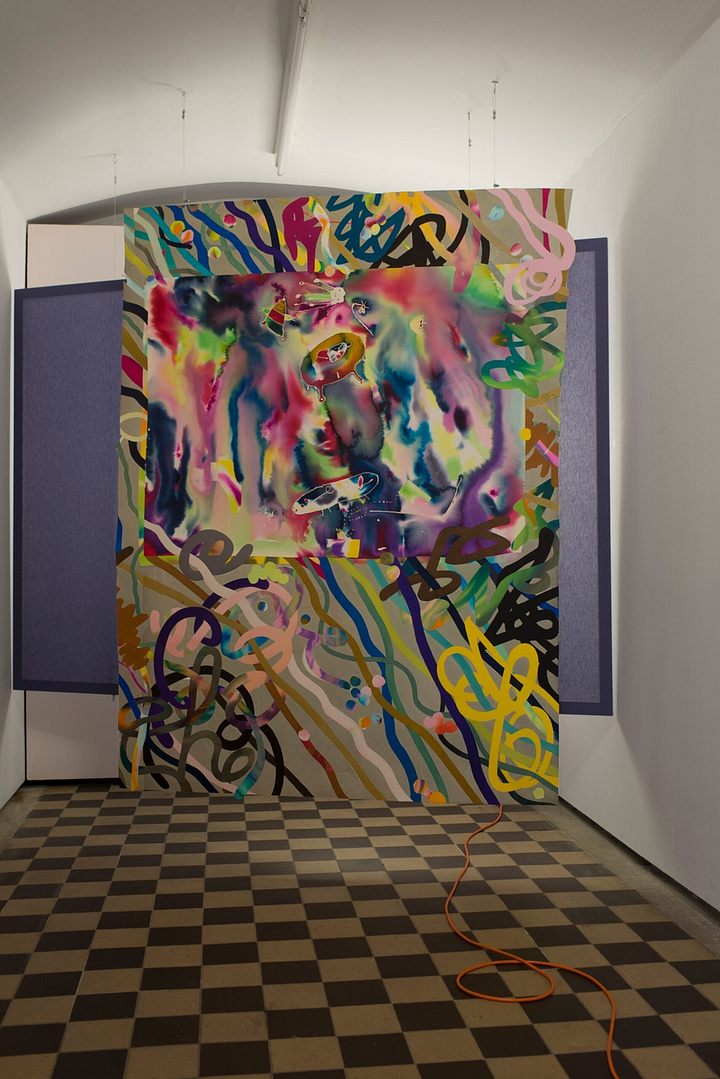here you can access a 3D view of the show!
atb #99, romain löser & wendelien van oldenborgh, 2023
August 19 – September 17 2023, After the Butcher, Berlin
the floor plan, the handout as well as a german version of Clemens Krümmel’s text can be found on the Contemporary Art Library
atb#99 Romain Löser / Wendelien van Oldenborgh
This exhibition brings together two artistic voices, in an attempt to neither emphasise nor deny clearly existing differences in form and content. Romain Löser and Wendelien van Oldenborgh belong to different generations, and when it comes to measuring possible harmonies or dissonances between their artistic practices, it is easy to see that both work mostly in different media, each with their own themes, techniques and conceptions of the public. Nevertheless, their joint appearance at After the Butcher does not merely reveal vague professional sympathies or interests. Anyone who takes a serious look at the works by both artists, shown here in spatial interlocking, can see a comparability in the movements with which they treat the sharp complexities in the contradictions they each convey.
The film and video artist Wendelien van Oldenborgh, who usually produces works that tie in with current events for specific locations and thematic contexts, has decided to show an older video in this exhibition. Partly staged inside Rotterdam’s Museum Boijmans Van Beuningen, partly simply recorded, partly fanned out via montage principles, the encounter singles out representatives of Rotterdam’s youth and party culture typical of the time. “Sound Track Stage” (2006, first shown in 2008; 26 min.) is about an almost playful conflict between two prominent representatives of musical styles that were influential in the Netherlands and the rest of Europe at the time. Paul Elstak, an important founding figure and representative of a version of “hardcore house” in the Netherlands, known as “gabber”, calls the straight style, accentuated by dramatic breaks, which he propagated to the party crowd, a “punk of the 90s”. In the video, he encounters the experienced hip-hop DJ Mr Wix, who describes the music he represents as political and as a medium of expression for Rotterdam’s Black community – in stark contrast to Elstak, who passes off gabber as an apolitical and anti-intellectual lifestyle, defending himself against the widely spread accusation that it is a “right-wing” or “extreme right-wing” music. The rhythmic bluntness and the — if present — extremely plain textuality of his male connoted “hardcore”, which is drawn from other drastic cultural contexts, he tries to legitimise through its proximity to the DIY specifications of the historical punk movements — he denies the assessment that it is a “white” dance music. Mr Wix, on the other hand, speaks of hip-hop as an underground medium originating from minorities, which is characterised by the much more complex groove of language — language as a hip-hop-specific cognitive experiment, washed with all waters, but he seeks his artistic fields of reference in established representatives of the style from the 1990s such as Public Enemy — which his counterpart Elstak can quite simply ridicule as “millionaire music” by American superstars. In the video, both representatives of the style engage in a battle with intentionally saturated text quotations and beat examples – but van Oldenborgh’s sovereign montage manages to repeatedly realign the two men within the ephemeral cardboard panel architecture of the architects’ group STEALTH.unlimited – and to show the confrontation on a different level. That the downright childishness with which a boyish concept like “hardcore” with its reduced emotional world, and an unbroken political claim to representation and relevance of hip-hop, are championed in this public encounter as reductionist standpoints, begs the amazed question, whether this is really supposed to be only seventeen years ago. With the re-entry in the year 2023, cinematically working towards momentary meetings of points of view, Van Oldenborgh achieves that the bridges between identitarian “bubbles”, so broken now, especially through the influence of social media, and part of a not just “primitive” past, may seep back into our consciousness.
In the form-guided analyses of serial structures in global distribution systems with which Romain Löser has recently worked out dimensions of international trade movements, working with conceptual means, there has probably always been qualities of abysmal and systemically arguing thinking. His affirmative use of the industrial standard sizes of plastic transport boxes, which he has transformed on an aesthetic level into a kind of “capitalist Golden Ratio” and which he has explored in numerous versions and taken ad absurdum,, has long been aware of the possibilities of caricatural, graphic intensifications, and the fickle atmospheric quality of painterly colour spectra. Löser’s series of pictures in this exhibition, which he created over the last two years, uses the watercolour technique in a completely new, less linear and screen-print-lookalike way of realisation. The works in his current series consist of Prussian dark blue to ivory-black watercolour surfaces on watercolour paper. He has painted over older pictorial material here, with the aim of making it invisible. On the many layers of his new paintings, he enforces the logistics of moisture and dryness that are fundamental in watercolour by making the initially closed but still slightly wet surface of paint more fluid again with drops of water from a pressure sprayer. This creates an area-wide pattern of cloudy, fibrous, lightened patches in the dark, which in turn require a precisely tracked drying time and sensitive placement so as not to become an independent trickle on the picture plane. Romain Löser has conceived the procedure described here rather intuitively, less in the sense of a “hard” dialectical method.Serving as an outer pole of his working method here, he has placed a wildly coloured variant in the rear exhibition room, one that is troubled by many formal irritations, as a countermeasure to his own, more reserved paintings in the front room.
Just as Wendelien van Oldenborgh uses refined methods of non-linear montage to show in the actual present of the projection how projections and designs of the past reverberate in the “fabrics” and in the behaviour of her subjects, Romain Löser unfolds in the medium of watercolour, historically defined as sensitive and moment-bound, an adjustable encounter that penetrates historical boundaries with and between the layers, when he allows drops to attack his painted surfaces; when he allows what appears to be solidified to become porous and mobile again; when he restores the liveliness and openness of tendencies and layers that have become static in the picture — which becomes apparent especially when viewers look at his pictures for longer than a minute. His watercolours remind us that it was not Op Art that opened up the modern picture space optically, but rather a surrealist like René Magritte or a colour field pioneer like Mark Rothko. The lines in the exhibition space, made as expressive picture supports, reinforce, in the case of the watercolours, the rhetorical power of Löser’s painting and produce a intense space of time for van Oldenborgh’s cultural and contemporary historical space-time survey.

